Uh oh, is your pickleball paddle looking a little worse for wear? 😬 Has it lost its paddle pop and just doesn’t have that sweet pickleball pop anymore? When it’s time to retire that tired old paddle and treat yourself to a shiny new one, here’s the pickleball paddle guide to find out do pickleball paddles wear out. How Long? When to Replace;
How Do You Know When Your Pickleball Paddle is Worn Out?
Pickleball paddles can show signs of wear and tear after frequent use. Here are the top indications that your paddle needs replacing:
1. Cracks, Chips, or Holes in the Paddle Face
Check your paddle face (the part that hits the ball) closely for any cracks, chips, gouges, or holes in the surface. Damage to the paddle face can impact your performance. Even small cracks require replacement.
2. Large Scrapes or Gouges
Major scrapes or gouges on the edge or surface of the paddle may also warrant replacement. While surface scratches are normal with use, and deep grooves indicate more significant wear.
3. Delamination or Peeling
Many pickleball paddles have a layer of fiberglass, carbon fiber, or polypropylene honeycomb inside the surface material. Delamination or peeling of these internal paddle layers means structural failure. Time to replace!
4. Soft Spots or Dents
Check your grip and paddle face for any soft indentations or dents. If you can depress the surface significantly with your finger, the interior foam or honeycomb core may be compressing or deteriorating.
5. Lack of Power and Pop
Over time, even an intact paddle may lose its snap and power. If the paddle feels “dead” or lacks pop on shots, it could mean the materials have fatigued.
Signs It’s Time to Replace Your Pickleball Paddle
Watch for these signs that indicate it’s time to retire your trusty paddle and upgrade to a fresh new one:
- You’ve used it for 2+ years of frequent play
- The paddle face has major chips, cracks, dents or fraying
- The paddle doesn’t feel as rigid – it flexes and twists in your hand
- Your shots consistently sail long or bounce off the edge of the paddle
- You’ve noticed a decline in your control and accuracy
- The grip is smooth, sticky or slippery and needs to be replaced
- Your paddle feels obviously heavier and lacks maneuverability
- The edge guard is detached or missing, exposing rough edges
- You’ve outgrown the size, weight, shape or style as your game improves
If you notice one or more of these issues, it’s a sign that your old paddle is due for retirement. Any decline in performance means it’s time to upgrade.
How Often Should You Replace Your Pickleball Paddle?
Most pickleball paddles should be replaced every 2-3 years with frequent play. Here are general guidelines on when to swap your paddle:
For Recreational Players:
- Playing 1-3 times per week: Replace every 3+ years
- Playing 4-7 times per week: Replace every 2-3 years
For Competitive Players:
- Playing 2-3 times per week: Replace every 2 years
- Playing 4+ times per week: Replace annually
However, the lifespan can vary based on your play style and how heavily you use the paddle. Power players who really bang the ball hard may need a new paddle yearly. Finesse players who gently control shots may get 3+ years out of a paddle.
Look at your paddle regularly for signs of wear and replace as soon as you notice decline in performance. It’s not worth compromising your play and development with a worn out paddle!
Pickleball Paddle Materials and Average Lifespan:
| Material | Average Lifespan |
| Wood | 1-2 years |
| Aluminum core | 1-3 years |
| Fiberglass face | 2-4 years |
| Carbon fiber core | 3-5 years |
Choosing a New Pickleball Paddle
When it’s time to replace your paddle, use the opportunity to upgrade. Look for these key features in your new paddle:
- Lightweight – Around 7.0-8.4 oz for optimal maneuverability
- Composite polymer face – Provides touch and control while still offering pop
- Honeycomb core – Gives added power and dampening
- Widebody shape – Enlarged sweet spot for more forgiveness
- Grip size – Based on hand size and personal comfort
- Texture grip – Cushioned, tacky grip improves control
- Edge guard – Protects paddle and boosts longevity
- Personal play style – Control, spin, power? Match paddle features to your strengths/preferences.
- Budget – Set a budget and look for quality construction and materials that will withstand frequent, aggressive play.
Take the time to try out various paddle brands and models before committing to find your ideal match. A new paddle takes some adjustment but can elevate your skills and consistency.
Can You Repair a Damaged Pickleball Paddle?
Minor pickleball paddle damage like chipped edges or small cracks may seem like easy fixes. However, most manufacturers do not recommend DIY repairs. Here’s why:
- Adhesives or epoxy cannot restore original strength and performance.
- Incorrect repairs may void a paddle’s warranty.
- DIY repairs are usually temporary and paddle failure risk increases.
- Repaired paddles must be rigorously retested for USA Pickleball safety certifications.
Instead of attempting repairs, replacement is the best option to ensure player safety and enjoyment. That being said, there are a few exceptions:
Consider Repair For:
- Grip Replacement – Worn paddle grips can be replaced to extend playability.
- Edge Guard Fixes – Frayed edge guards are easily replaced.
- Scratch Removal – Light sanding can help smooth minor surface scratches.
While repairs are not advised, some basic care and maintenance steps can prolong the life of your pickleball paddle:
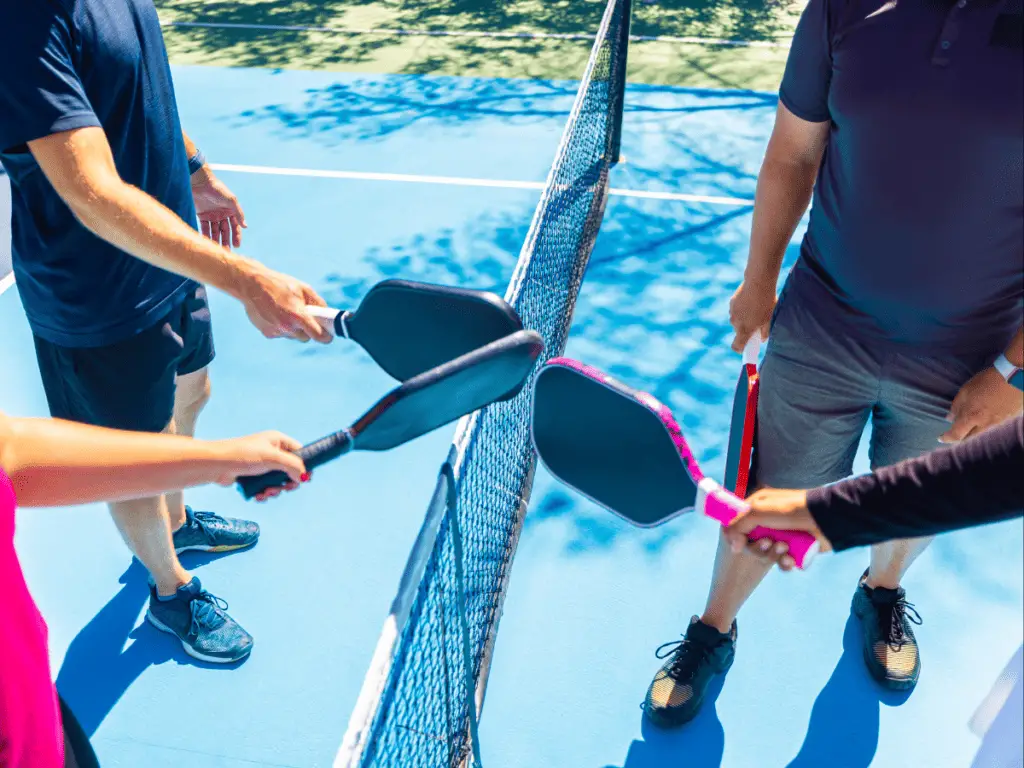
Tips for Extending Your Pickleball Paddle Lifespan
Here are some best practices to maximize your investment in new paddles:
- Use paddle covers – Protect your paddle when not in use.
- Play on smooth courts – Choose courts with an even, non-abrasive surface when possible.
- Store paddles properly – Keep paddles away from extreme temperatures and moisture. Store vertically.
- Avoid cracking the face – Never hammer the paddle face on the court out of frustration!
- Check for damage – Periodically inspect for any cracks, delamination, or soft spots.
- Limit sun and heat exposure – Keep paddles out of direct sunlight when not playing. Never leave paddles in hot vehicles.
- Consider your playing style – Aggressive, competitive play causes faster breakdown than recreational play.
- Use proper technique – Efficient strokes put less stress on the paddle over time. Take lessons to improve form.
- Buy quality – Cheap paddles wear out quickly. Invest in trusted brands with durable construction.
Pickleball Paddle Damage and Recommended Action:
| Type of Damage | Recommended Action |
| Small cracks in paddle face | Replace paddle |
| Major scrapes or gouges | Replace paddle |
| Delamination/peeling | Replace paddle |
| Soft spots or dents | Replace paddle |
| Loss of power/pop | Replace paddle |
| Frayed edge guard | Replace edge guard |
| Worn grip | Replace grip |
| Surface scratches | Light sanding |
Must read it out if you want to know How to clean a pickleball paddle.
Frequently Asked Questions About Replacing Pickleball Paddles
How much do new pickleball paddles cost?
Pickleball paddles range widely in price from $50 for basic wooden paddles up to $150+ for high-end, professional graphite paddles with the latest features and tech. Expect to pay $80-100 for a quality, composite paddle from a top brand designed for competitive play.
Should I get the same model paddle as a replacement?
Not necessarily – when replacing your paddle, take the opportunity to demo new brands and models. You might find one you like better than your old paddle. However, if you know a specific paddle suits your game, replacing with the same version can allow an easy transition.
Is it better to resurface or buy new paddle?
For significantly damaged paddle faces, professional resurfacing can repair chips and dents. However for optimal performance, it’s usually better to invest in a new quality paddle every few years as technologies improve.
Can I trade in my old paddle?
Some pickleball retailers and websites accept trade-ins of lightly used paddles toward the purchase of a new one. You can also sell usable paddles online. But heavily worn/damaged paddles have little resale value.
How do I dispose of my old pickleball paddle?
If your paddle is intact but just worn out, consider donating to a community center or school recreation program. Otherwise, paddles can be disposed with residential waste for landfills if no recycling options are available in your area.
How long should a pickleball paddle last?
With frequent use, most paddles should last 1-2 years before needing replacement. Occasional and recreational players may get 2-4 years out of a paddle. Higher quality paddles also tend to have longer usable lifespans.
What are signs it’s time to replace a pickleball paddle?
Declining performance, chips/cracks, excessive scuffing, grip wear, dead spots, and deformation are signs your paddle may need to be retired. If you’ve used it heavily for over 2 years, it’s also a good indicator.
Does weather affect pickleball paddle durability?
Yes, UV rays from the sun can fade graphics and degrade polymer paddle materials over time. Extreme heat can warp paddle shapes if left in places like hot cars. Colder temps can make some materials more brittle. Storing paddles properly helps prolong life.
Can you repair a cracked or chipped pickleball paddle?
It’s challenging to properly repair cracks or chips without impacting paddle play and feel. Often it’s better to invest in a new paddle once defects emerge unless it’s a high-end paddle worth sending back to the manufacturer to assess repairs.
How often should you replace your pickleball paddle grip?
Plan to replace your grip tape about once a year, or more often if you play frequently. Look for smooth worn places or when the grip feels slippery and loses its tackiness. Re-gripping regularly helps maintain ball control.
Should I bring extra paddles when I play pickleball?
Carrying 1-2 extra paddles to games is smart in case your primary paddle gets damaged. Rotate paddles during long days of play to increase the longevity of all your gear.
What are the best pickleball paddle brands?
Top brands known for quality and durability include Selkirk, Gamma, Onix, Paddletek, Franklin, Engage, and ProLite. Invest in a mid-range or higher-priced paddle from a trusted manufacturer.
The Takeaway: Pickleball Paddles Have a Limited Lifespan
Even quality composite paddles will wear out after a few years of regular play. By proactively replacing your paddle every 2-3 years minimum, you’ll enjoy consistently good performance as newer technologies and materials improve over time.
Worn-out paddles negatively affect your play and put you at a disadvantage on the court. So check your gear regularly and invest in a new paddle as soon as you notice a decline in function. With a fresh paddle designed for your play style, you’ll find your pickleball skills and compete at your best! Best of luck 😊
If you’re interested to know the top female pickleball players to watch out for in 2023, this article may be worth exploring.

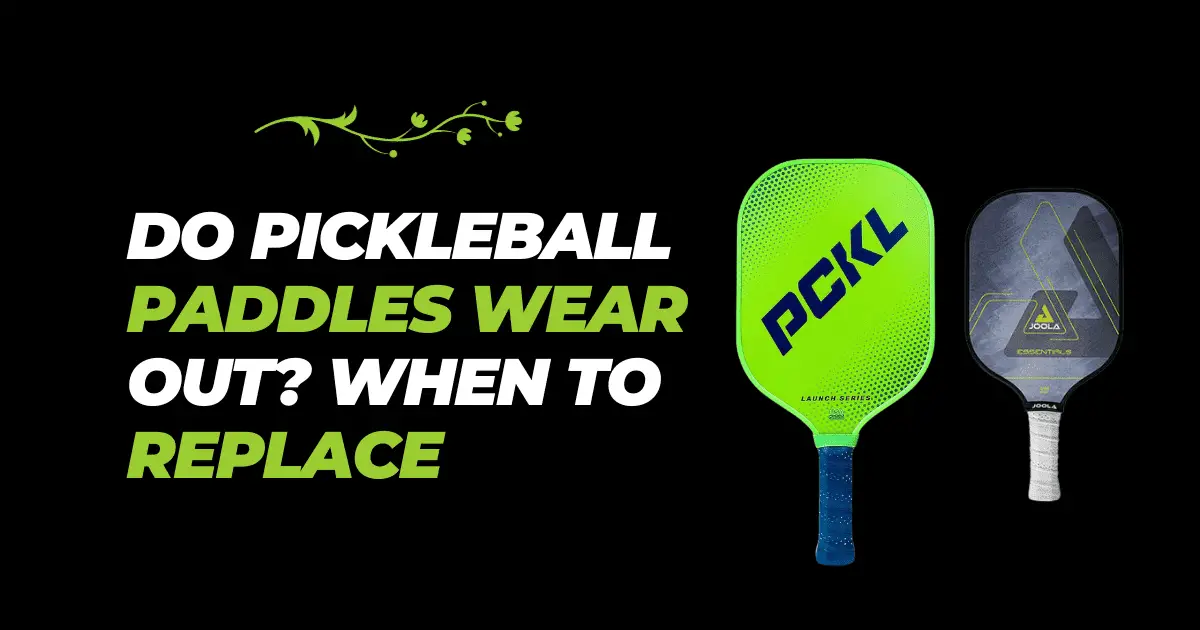
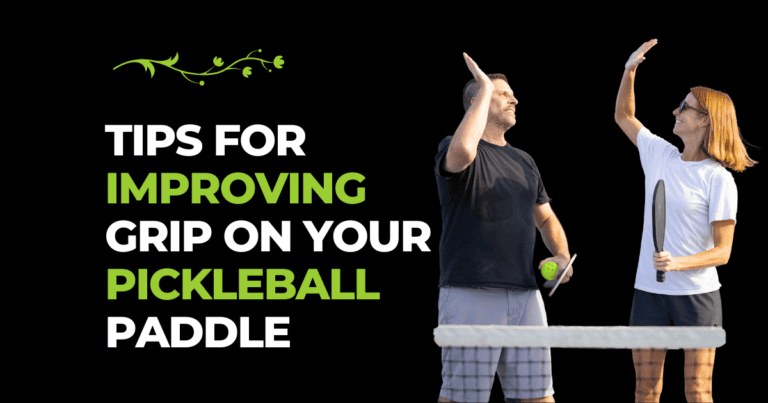
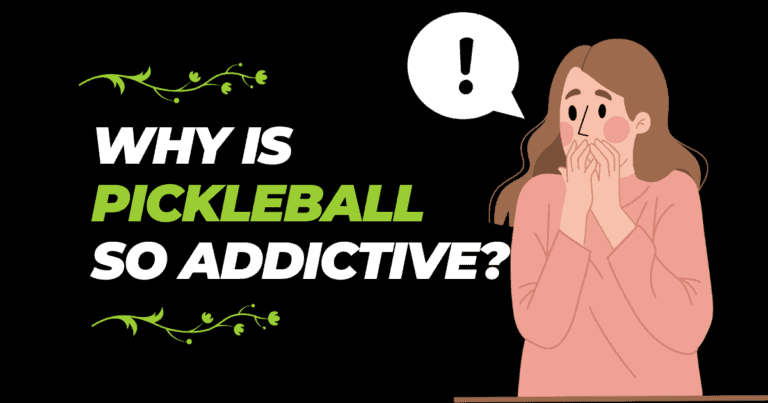
![Best Women’s Pickleball Shoes [2024] Tested by Pros](https://thunderpickleball.com/wp-content/uploads/2024/02/Best-womens-Pickleball-shoes-1-768x403.png)
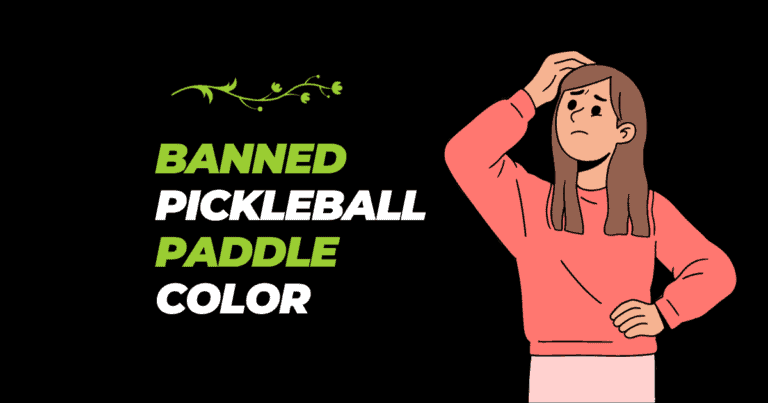
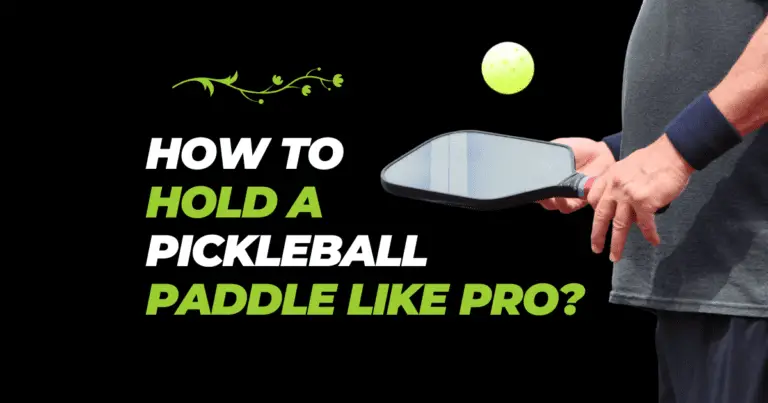
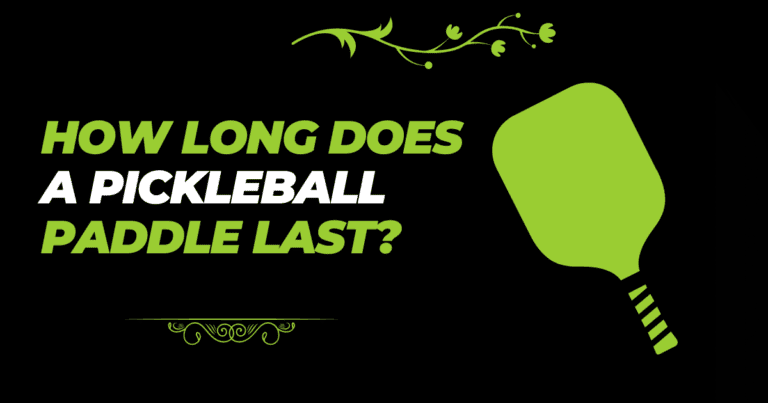

Thanks for also talking about where old paddles could be donated. I want to buy a custom pickleball paddle soon because I’ve been trying to be more active these past few months. I think that taking up a sport will be a good idea for that.
That’s great to hear! A custom paddle sounds like a fantastic way to dive deeper into the sport. Best of luck with your pickleball journey! You’ll love the personalized feel and performance. And donating old ones helps others get started too!